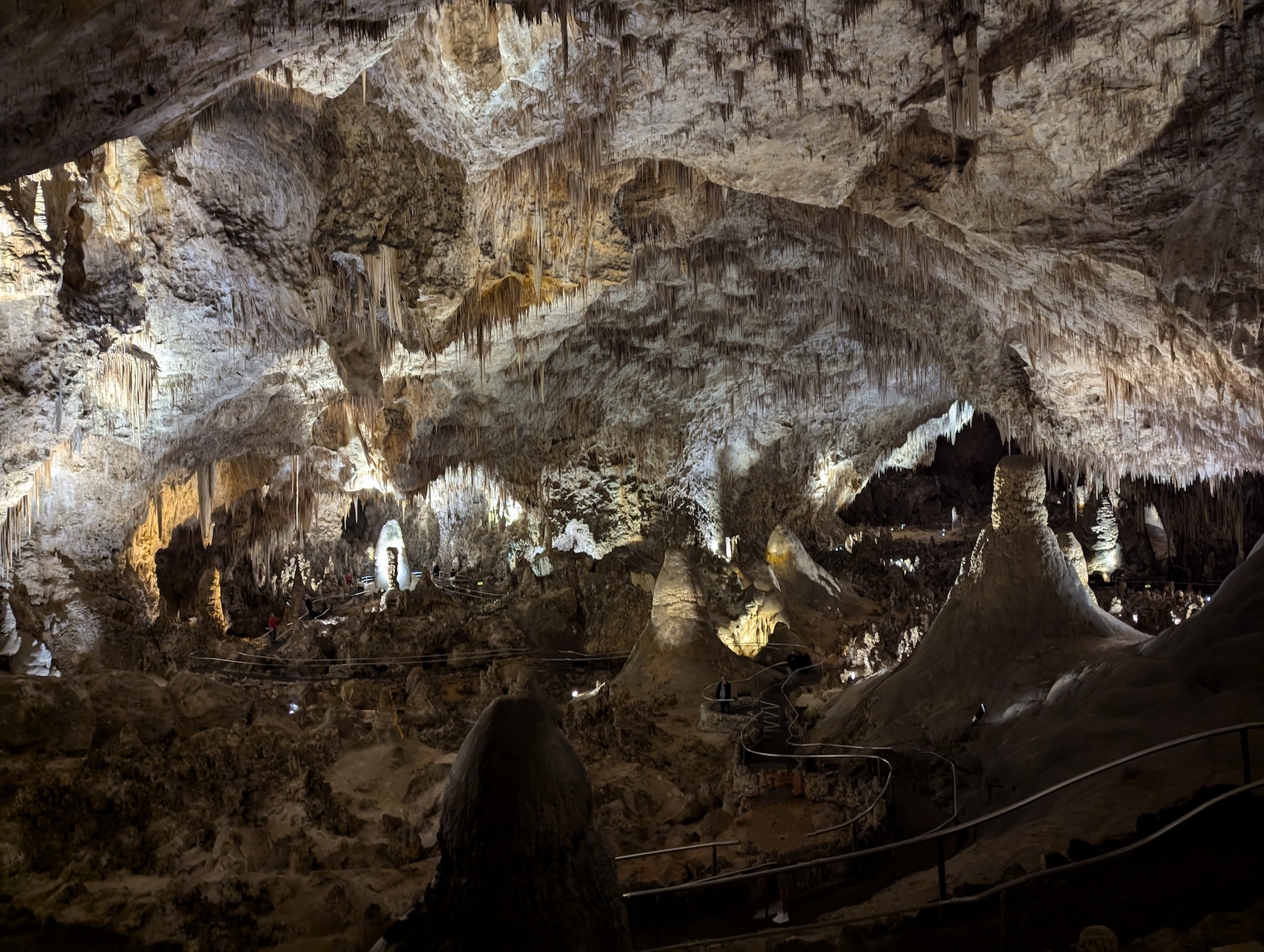
Of the Cave: An Exploration into Our Relationship with American Caverns
Despite all evidence to the contrary, we believe that we were once cave people. The stories that we have told ourselves about our past—stories that look a lot like old museum dioramas and The Flintstones—are not very accurate. Still, we tell these tales over and over, and they have shaped our modern connections with these underground landscapes. Thanks to the Newman Exploration Travel Fund (NEXT), I set off to South Dakota, Colorado, and New Mexico to discover more about our current relationship with caverns.
South Dakota
I began my trip in the Black Hills of South Dakota where I visited Jewel Cave National Monument and all of its 734 stairs to get a better look at how we have transformed some of the most inaccessible places on the planet into tourist hubs.
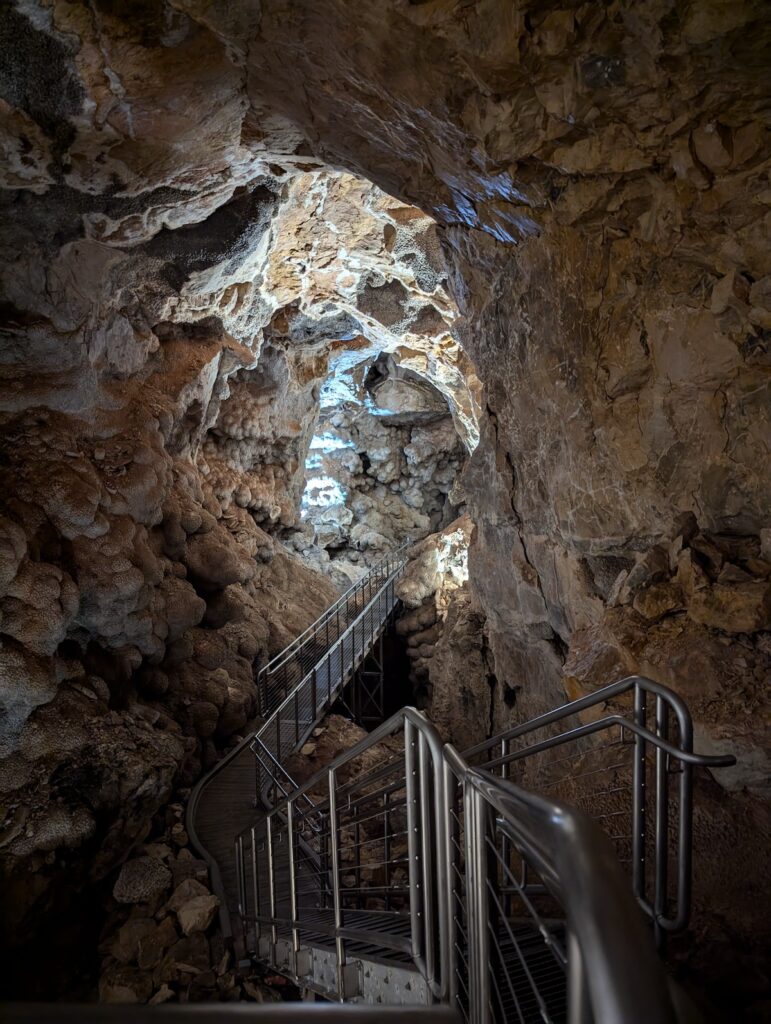
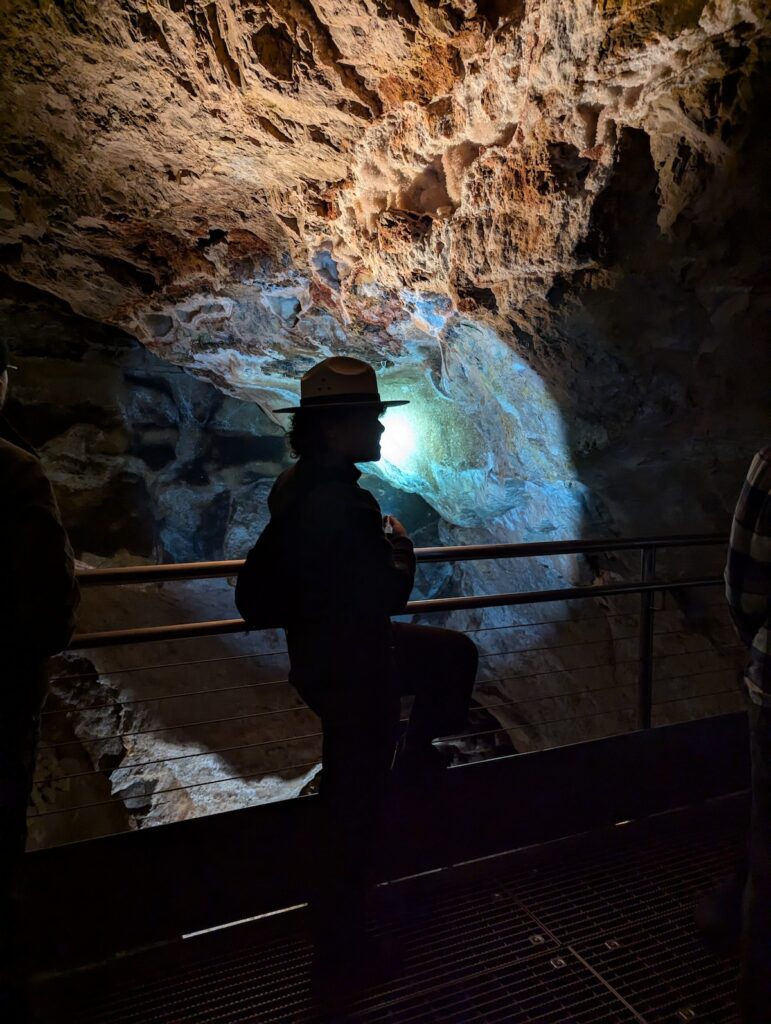
I was surprised to find that Jewel Cave centered the conversation on accessibility. Besides a large display in the visitor’s center (questions like “The mission of the National Park Service is to preserve natural and cultural resources and provide an enjoyable experience for visitors. How can both goals be achieved?” are posted on the wall), it’s a large focus of the tour. We were warned over and over to watch our step and hold onto the handrails. Our guide also encouraged us to think about Herb and Jan Conn, the explorers who mapped all the rooms on the tour and over 60 miles of the entire cave. “They bellycrawled and scrambled in the dark so that one day, tourists wouldn’t have to,” our guide said.
There was no denial about the impact of this tourism. The blasts from the elevator construction work, for example, split the shale, creating new pathways for water. One of the main rooms of the caverns, dry when Herb and Jan first crawled into it, began to drip again.
As with all national lands, there are still questions about how to strike the balance between preservation and tourism. But even though Jewel Cave has been reworked to accommodate our presence, it’s important to note that these areas only account for 3% of the cave’s total volume. That’s not to say we should be allowed to alter nature below a certain percentage, but my trip to Jewel was a good reminder that these spaces still exist beyond our impact and what we can see.
I also stopped by Wind Cave, Jewel Cave’s more famous neighbor (600,000 annual visitors to Jewel’s 125,000) but only the above-ground portion. Somewhat ironically, cave tours are on hold because of an elevator renovation.
But these caves are just one part of this western region of South Dakota. The geology is shaped like a large, deformed bullseye. A Precambrian granite and schist core has been uplifted in the center. It is surrounded by a ring of younger limestone and a ring of still younger sandstone. My time in each of these circles was marked by an astounding level of variety, more so than any other region from my travels. I camped on top of the schist; I saw mammoth bones in the sandstone; I rode through the granite needle spires; I watched the bison and sheep graze across Custer State Park. Every day, both above and below the surface, brought something new.
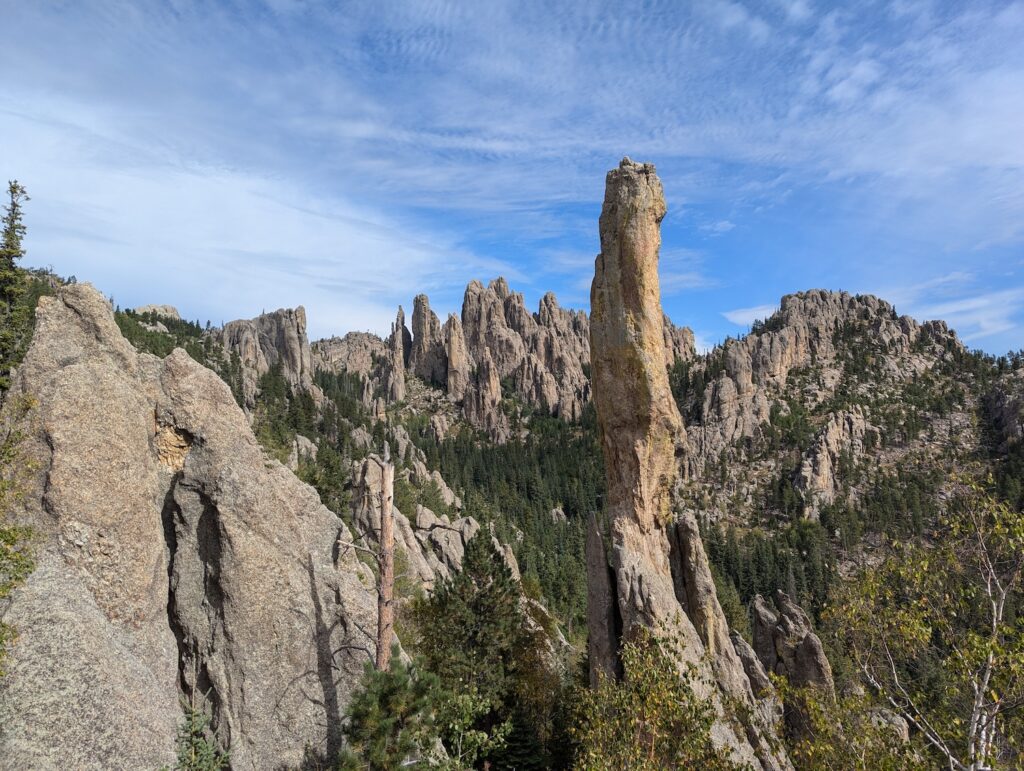
Colorado
After South Dakota, I headed to the Pikes Peak region of Colorado, specifically a cave on top of a mountain called Cave of the Winds (not to be confused with the Niagara Falls attraction of the same name). It is one of the highest touring caves in the United States at 7000 feet. Unlike many American caverns, this cave was never mined. For almost 150 years, the guides here have been giving out tours. These days, visitors can also partake in something a little different—the Haunted Lantern Tour.
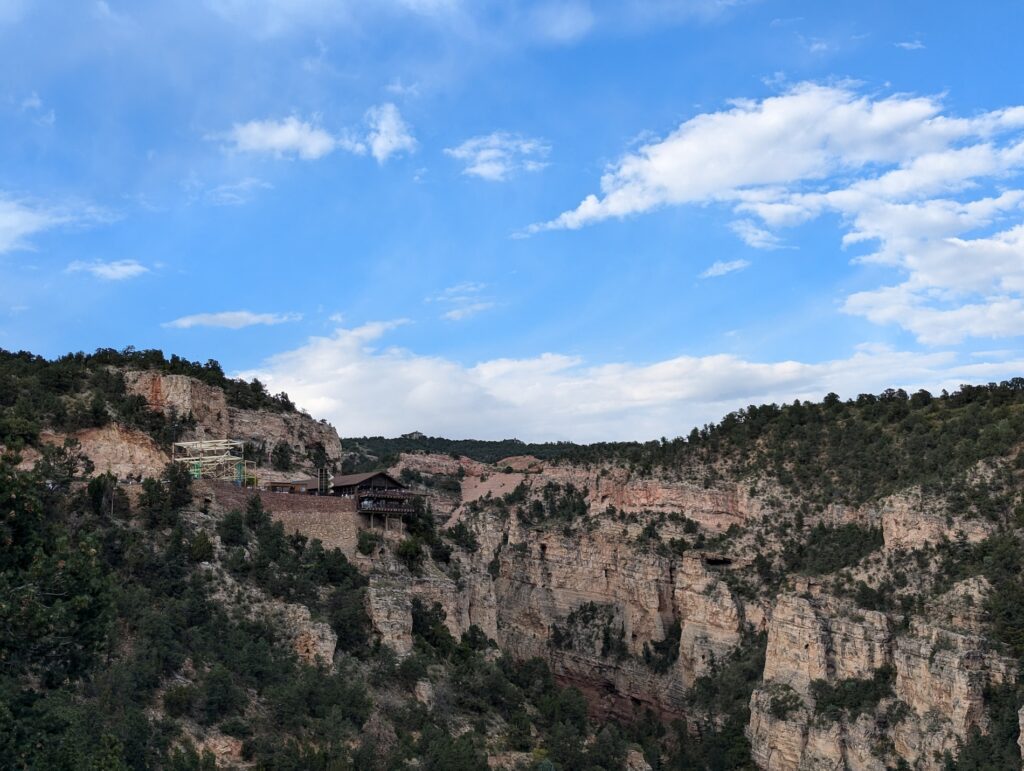
After hearing so many cave-based horror stories, both real and fictional—The Descent, Nutty Putty Cave, The Enigma of Amigara Fault, Tham Luang Nang Non—I wanted to see how humans were taking advantage of this fear. Are caves like rollercoasters? Or shark dives? Haunted houses? How have we monetized our fear?
The Haunted Lantern Tour at Cave of the Winds actually takes place in a cave system called Manitou Grand Caverns which was connected to the Winds by human hands after it was discovered in the late 1800s. But this portion of the cave remains largely unchanged from when it was first opened for tours in 1885. There are no overhead lights or paved pathways. Instead, we were given kerosene bucket lanterns to carry through the dark passageways. When I wasn’t too busy listening to ghost stories, I was squinting above me, trying to avoid hitting my head (some portions of this tour are only forty-two inches high).
Though untouched natural spaces are lovely, there is something so human, so wonderful, about laughing at hokey jokes and spooky stories in the dark; it’s like the underground version of sitting around a campfire. It’s a shortcut to bonding, and despite having gone on the tour alone, I found myself oohing and ahhing along with the rest of the group to the tales of mummies and mischievous spirits. And though these stories had all the ingredients for scares, the real horror was in the cave itself. I could never see more than a few feet around me, and the knowledge that I had no idea where I was in that space was ever-present. Our seasoned tour guide skipped ahead of us and out of view around every turn, adding to the anxiety.
Because the lantern tour did not allow for pictures—or much information about the geology of the caverns—I also went on the standard tour through the original Cave of the Winds where I learned more about the formations and history that make this place so unique, including stalactites that grow sideways and a bid between Edison and Tesla for the original electric lighting system.
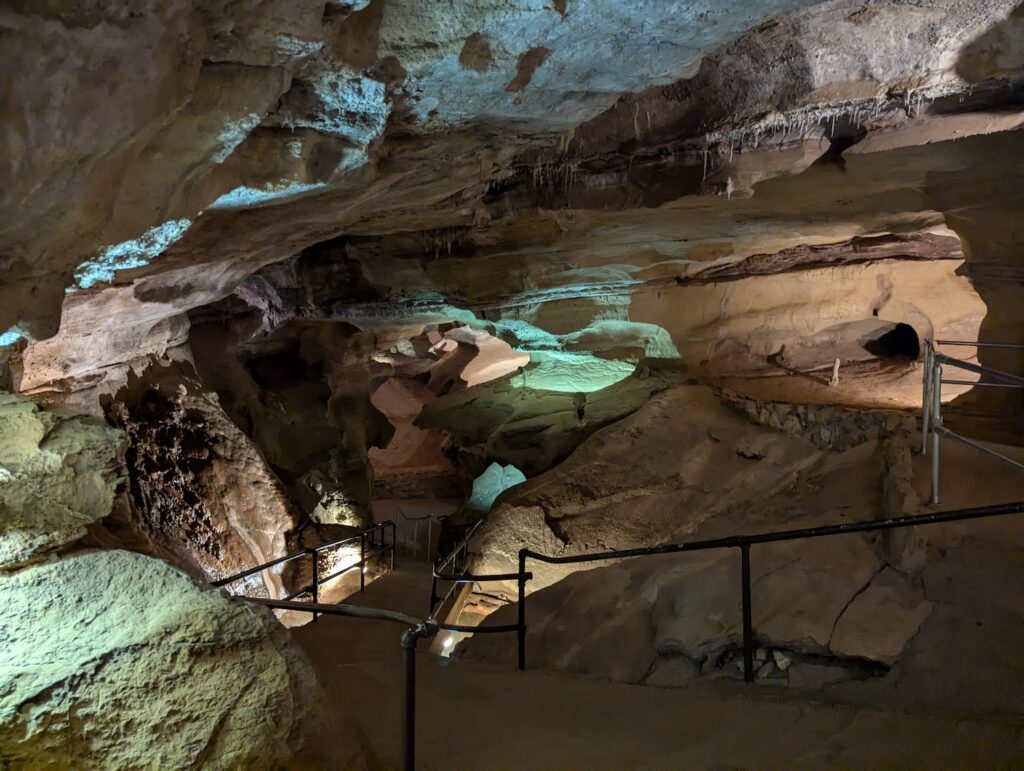
Between my visits to Cave of the Winds, I explored the surrounding landscapes, including Garden of the Gods State Park (a place with higher annual visitor numbers than any other location I visited on my trip), the mountains surrounding Pikes Peak, and the Manitou Cliff Dwellings.
When I wasn’t hiking, both above and below ground, I was digging into the archives. The history of these caverns is complicated, riddled with lawsuits and discovery timeline debates. The mummy stories and the dark passageways may be frightening, but it seems that for many of the men and women who were a part of the cave’s early days, the thing they feared most was each other.
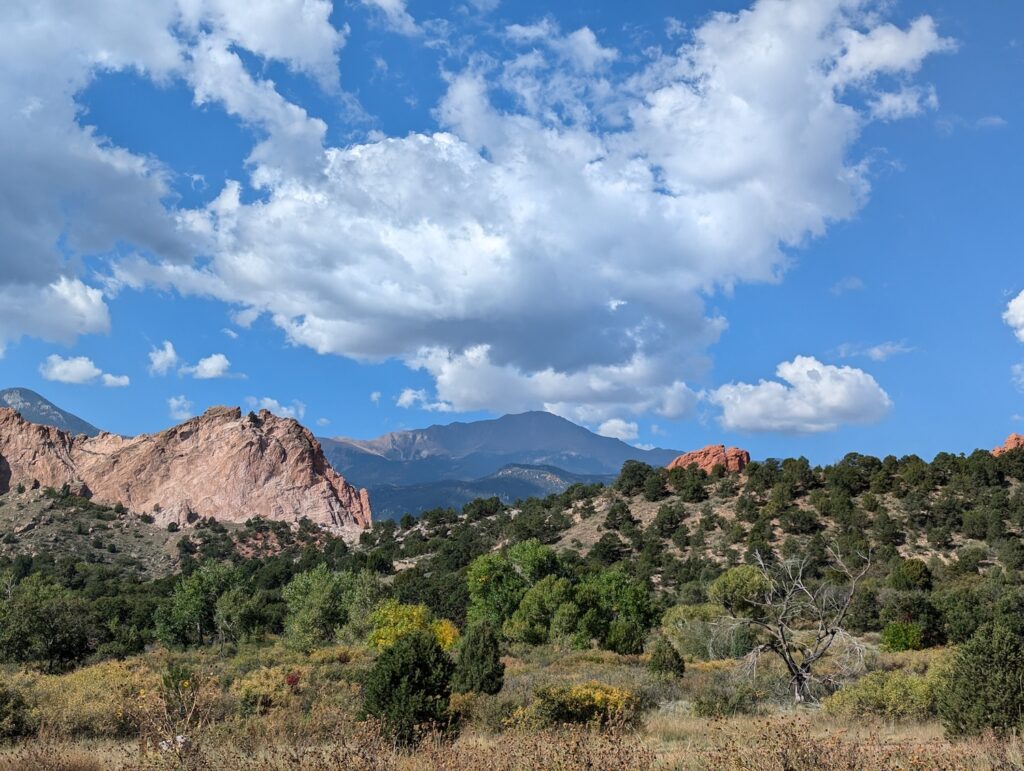
New Mexico
The final stop on my trip was Carlsbad Caverns National Park in New Mexico, home to hundreds of thousands of Brazilian free-tailed bats. Every night, give or take, from April to mid-October, this colony flies from their roost over 1.5 miles in the cave out into the open air of the desert evening. Visitors like myself can sit in a small amphitheater outside the mouth of the cave and watch them take flight.
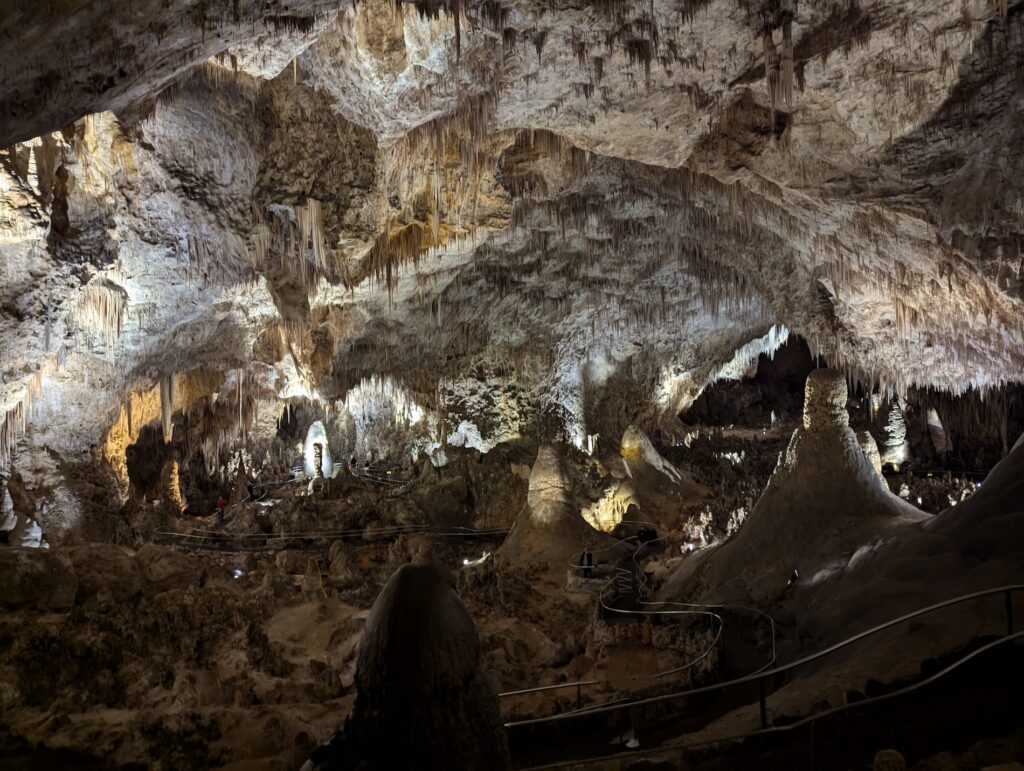
Unlike Cave of the Winds, Carlsbad did start as a mining operation. There were no jewels, however, just bat poop—guano. This substance was used for gunpowder and fertilizer. The operation didn’t last long, and the cave pivoted to conservation.
Before I saw the bats, I went down into their home. Carlsbad is different from other touring caves in that you do not need a guide to enter. Despite knowing this before my arrival, it still felt wrong to walk alone down the countless switchbacks into the dark of the cavern, as if a real adult was going to yell at me for trespassing.
Saying something is hard to describe is often a writing cop-out, but Carlsbad goes beyond basic descriptions. Big, grand, complex—it is all of these things. In the audio tour, guides mention that though Carlsbad is not the biggest cave, nor the deepest, visitors often say it is the most beautiful. I found this to be true. Pictures, my previous research, stories from friends—nothing does it any justice.
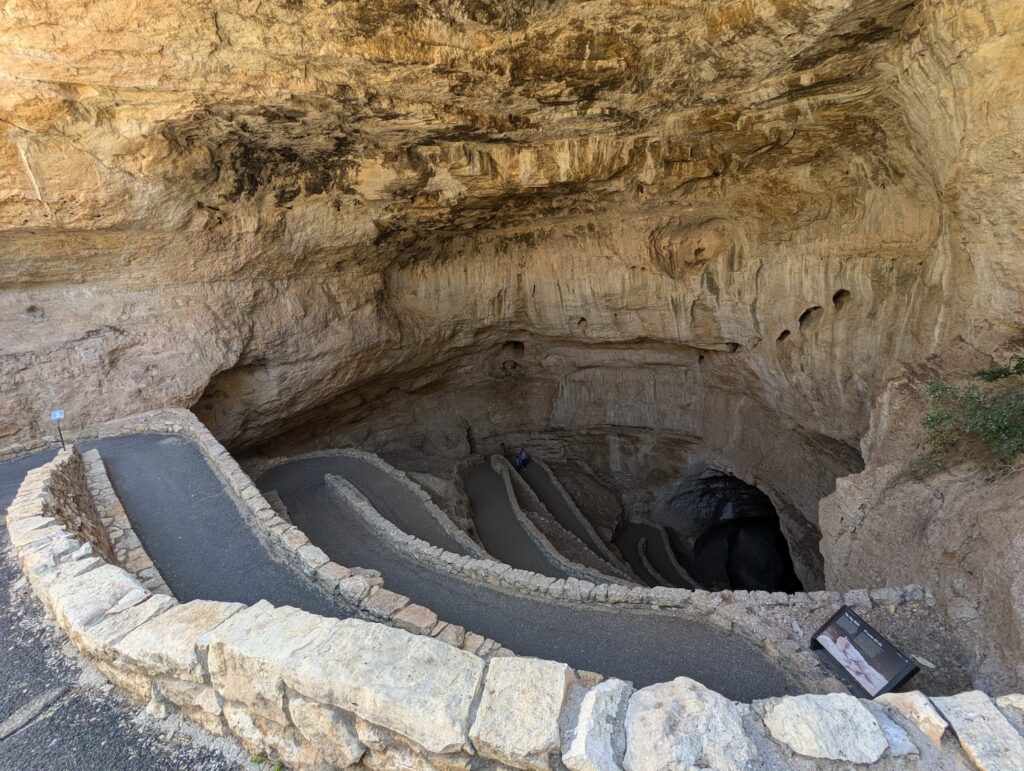
I was lucky to connect with some other visitors who were also there to see the bats. We talked about the ecological importance of these flying mammals (one told me that the first thing he does in every home he moves into is put up a bat box), but the conversation inevitably turned to the impact of tourism. I was reminded of my time at Jewel, though Carlsbad, without its guides, felt more like the Wild West. There was a trust put in people that was, as one of my fellow tourists said, risky. She watched other visitors touch the stalactites and stalagmites; she reminded people—screaming kids, clueless adults—to keep their voices down for the bats. I also learned of Lechuguilla Cave, another cave in Carlsbad Caverns National Park that is completely closed to the public. “Carlsbad is the sacrificial lamb,” a woman told me. It’s the cave that takes the hit of education so that these other spaces can be truly preserved.
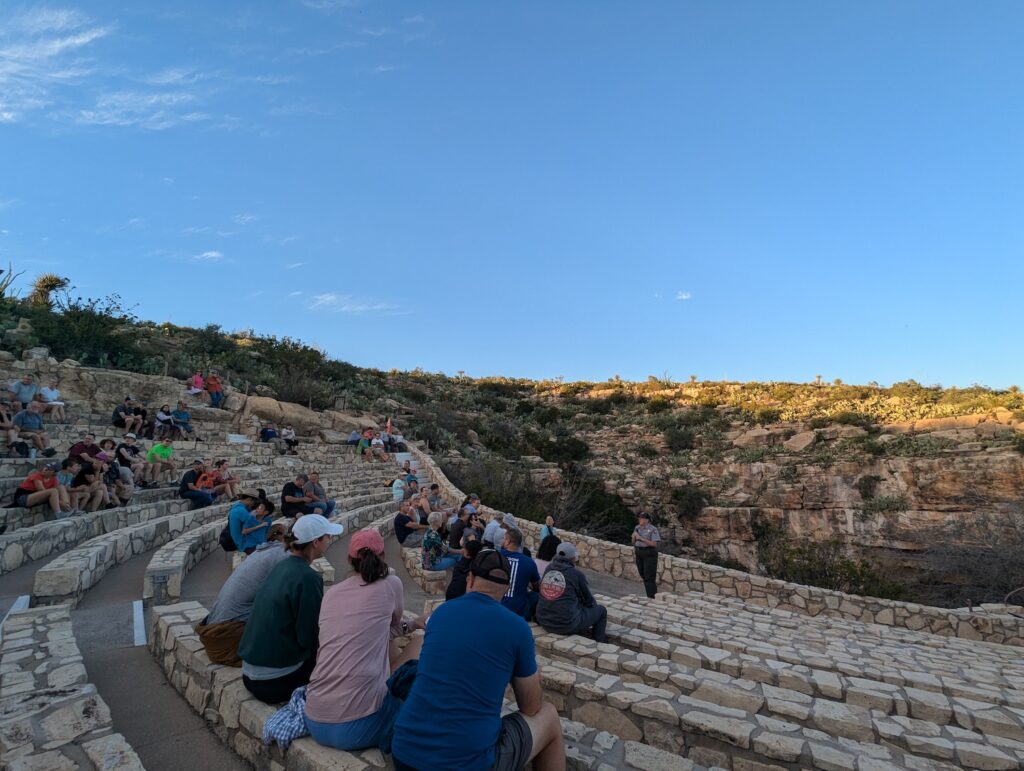
I attended two of the bat flight programs during my stay and was surprised by how much we still don’t know about these creatures. After watching the bats flapping off to the horizon until it was dark, I talked with the ranger in charge: “Why do the bats swirl as they exit the cave?” We don’t know. “Why do the bats stay inside some nights?” We don’t know. We’re trying to find the answers, partly because that’s what humans like to do (we’re nosy), but also because Carlsbad Caverns, and places like it, are looking for more ways to protect the bats.
Beyond my time in the actual caverns, I drove south to Guadalupe Mountains National Park and north to the city of Carlsbad to visit the Living Desert Zoo & Gardens State Park. I also spent time hiking above ground at Carlsbad caverns, walking the Old Guano Trail used when mining operations were still running. These experiences, just like every place I visited on this trip, illustrated how American caverns are a part of a larger historical and sociological context as well as an ecological one. I am grateful for the NEXT funding that allowed me to begin exploring these contexts first-hand.

